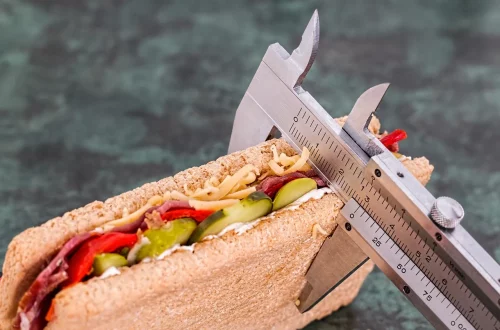
Choosing the Right Dog Scale for Your Pet’s Health and Wellbeing
Maintaining your pet’s health and wellbeing is an essential part of responsible pet ownership. One of the often-overlooked aspects of this responsibility is monitoring your dog’s weight. Just like humans, dogs can suffer from weight-related issues, which can lead to various health problems, including diabetes, joint issues, and heart disease. Keeping your dog at a healthy weight is crucial for their longevity and quality of life.
A dog scale is a valuable tool that can help pet owners track their canine companion’s weight over time. With the right scale, you can easily measure your dog’s weight, monitor changes, and make informed decisions about their diet and exercise routine. Choosing the right dog scale is not merely about picking one that fits your budget; it involves understanding your dog’s specific needs and the features that different scales offer.
In this article, we will explore the various factors to consider when choosing a dog scale, the different types available, and how to weigh your pet effectively. By investing time in selecting the appropriate scale, you can contribute significantly to your dog’s overall health and wellbeing.
Understanding the Importance of Monitoring Your Dog’s Weight
Monitoring your dog’s weight is more than a simple check-up; it plays a critical role in their overall health management. Weight fluctuations can indicate underlying health issues that may require immediate attention. For instance, unexplained weight loss can be a symptom of serious conditions like cancer, kidney disease, or diabetes. Conversely, weight gain can lead to obesity, which is linked to various health risks, including joint pain and reduced mobility.
Regular weight checks can help you identify trends in your dog’s health. A sudden change in weight may prompt a visit to your veterinarian, ensuring that any potential health problems are addressed early on. Additionally, knowing your dog’s ideal weight can help you tailor their diet and exercise regimen, leading to better health outcomes.
Moreover, many pet owners are unaware that different breeds have different ideal weight ranges. For example, a healthy weight for a Dachshund is vastly different from that of a Great Dane. Therefore, understanding your pet’s specific needs is crucial. A dog scale allows you to take accurate measurements, helping you maintain a healthy weight for your furry friend.
By keeping track of your dog’s weight, you can also set goals for their fitness and nutrition. Whether your dog needs to lose a few pounds or maintain their current weight, having an accurate scale allows you to monitor their progress. This can be particularly beneficial for older dogs or those recovering from surgery, where weight management is vital for their recovery.
In summary, regularly monitoring your dog’s weight helps you stay proactive about their health. It allows you to catch potential issues early and make informed decisions about their care. With the right tools, including a suitable dog scale, you can ensure that your pet lives a long, happy, and healthy life.
Types of Dog Scales Available
When it comes to dog scales, there are various types available, each designed to meet specific needs. Understanding the different types can help you choose the right one for your pet.
1. **Basic Digital Scales**: These are the most common type of dog scales. They provide a straightforward digital readout of your dog’s weight. Basic scales are generally easy to use and suitable for small to medium-sized dogs. However, they may not be ideal for larger breeds, as their weight limit can be lower than specialized scales.
2. **Veterinary Scales**: Designed for professional use, veterinary scales are built to handle a wide range of weights and offer precise measurements. These scales often have features that allow for easy reading, such as large displays and memory functions to track multiple weights. While they can be more expensive, they are an excellent investment for pet owners who want to monitor their dog’s weight closely.
3. **Platform Scales**: These scales are particularly useful for larger breeds. They have a spacious platform that can accommodate bigger dogs comfortably. Many platform scales come with features like a non-slip surface, ensuring your dog feels secure while being weighed.
4. **Portable Scales**: If you travel frequently with your pet, a portable scale can be beneficial. These lightweight scales are easy to carry and can be used in various locations, making them perfect for pet owners who want to keep track of their dog’s weight on the go. However, ensure that the scale is accurate and can handle your dog’s weight.
5. **Smart Scales**: In today’s tech-driven world, smart scales have emerged as a modern solution for pet weight management. These scales connect to apps on your smartphone, allowing you to track your dog’s weight over time. Some models even offer nutritional advice and fitness tips based on your dog’s data. While they can be more expensive, the convenience and additional features make them a popular choice among tech-savvy pet owners.
Each type of scale has its advantages and drawbacks, so consider your specific needs, budget, and your dog’s size when making a decision. Whether you opt for a basic model or a high-tech smart scale, the important thing is to ensure it meets your dog’s requirements and helps you keep track of their health effectively.
Choosing the Right Scale for Your Dog’s Size and Breed
Choosing the right scale for your dog is crucial, as different breeds and sizes can significantly affect your selection. Understanding the unique characteristics of your pet is the first step toward making an informed decision.
For small breeds, a compact digital scale may suffice. These scales are typically designed to accommodate lighter weights and can be easily stored away when not in use. They often feature an easy-to-read display, making weight checks quick and convenient. However, be sure to check the weight limit, as smaller scales may not be able to accommodate larger dogs.
Medium-sized breeds may require a more robust option, such as a platform scale. These scales provide ample space for your pet to stand comfortably while being weighed. Look for features like a non-slip surface and a stable base, which can help keep your dog calm during the weighing process.
For larger breeds, a heavy-duty platform scale is essential. These scales are designed to handle the weight of larger dogs without compromising accuracy. Ensure that the scale you choose has a high weight limit and a large platform to accommodate your dog’s size. A scale with a low-profile design can also make it easier for your dog to step on and off without fear of injury.
Additionally, consider your dog’s temperament when selecting a scale. Some dogs may be skittish and may need a scale that minimizes movement during the weighing process. In this case, a scale with a large, stable platform can help them feel more secure.
When shopping for a dog scale, always read customer reviews and product specifications to ensure that it meets your needs. The right scale will make weight management easier and contribute positively to your dog’s health and wellbeing.
Tips for Weighing Your Dog Effectively
Weighing your dog may seem like a straightforward task, but there are techniques and tips that can help ensure accuracy and make the process less stressful for both you and your pet.
1. **Consistent Timing**: Weigh your dog at the same time each week or month to track their weight accurately. Ideally, weigh them in the morning before their meals, as this will give you a baseline reading without the added weight of food in their stomach.
2. **Calm Environment**: Make sure the environment is calm and free from distractions. If your dog is anxious, they may not stand still, leading to inaccurate readings. Use a calm voice and gentle encouragement to help them feel at ease.
3. **Use Treats for Motivation**: If your dog is reluctant to step on the scale, try using treats or their favorite toy to coax them onto the platform. Positive reinforcement can help create a more positive association with the weighing process.
4. **Weighing Small Dogs**: For small breeds, you might find it easier to weigh yourself first and then weigh yourself holding your dog. Subtract your weight from the combined weight to get an accurate reading of your dog’s weight.
5. **Make It a Routine**: Incorporate weighing into your regular routine, so your dog becomes accustomed to the process. Regular checks can help you catch any sudden weight changes early on, allowing for timely interventions if needed.
By implementing these tips, you can ensure that weighing your dog is an effective and stress-free process. Regularly monitoring your dog’s weight will contribute significantly to their overall health and wellbeing.
In conclusion, investing in a proper dog scale and understanding how to use it effectively is a crucial part of responsible pet ownership. By actively monitoring your dog’s weight, you can ensure they remain healthy and happy throughout their lives.
**Disclaimer:** This article is not intended as medical advice. Please consult your veterinarian for any health concerns regarding your pet.




